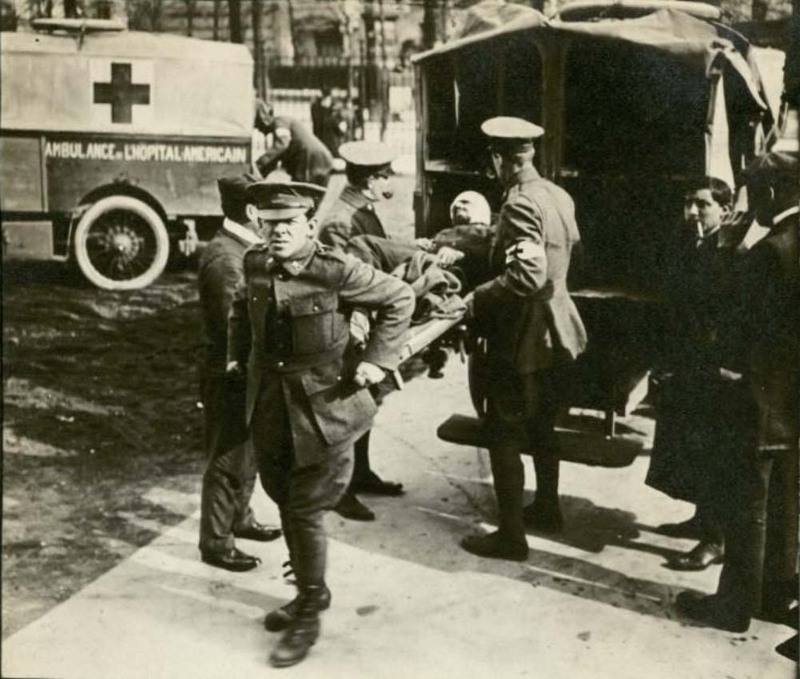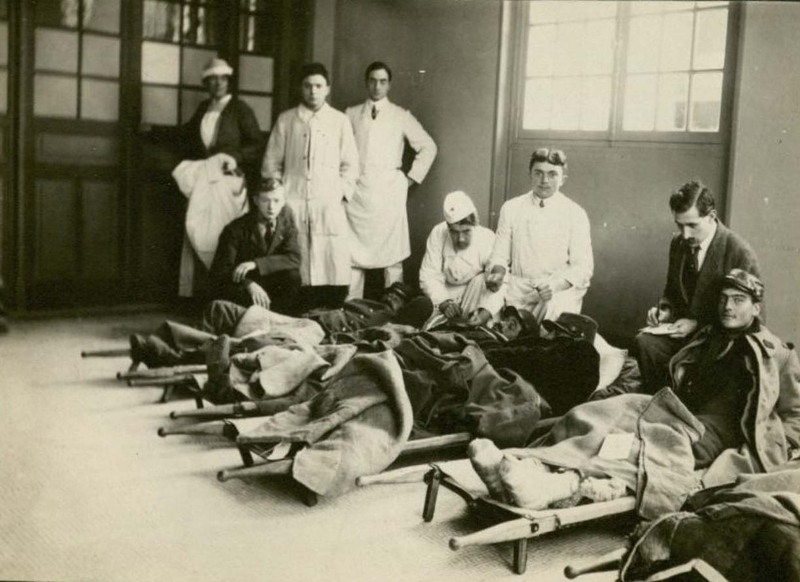University Service Units
The American Ambulance Hospital was divided into a number of wards or services, one under Dr. C. Winchester Dubouchet, the surgeon-in-chief of the American Hospital, and another under Dr. Joseph A. Blake. It was determined that a third service of some 190 beds could be staffed by surgeons from medical institutions in the United States, serving for periods of three months in rotation. This would be the so-called University Service.
In this way a considerable group of American surgeons would become familiar with military surgery, and in turn would disseminate their knowledge so that a more intelligent conception of this branch of surgery would in some measure prepare us for possible need in our own country. It was not intended that the universities should assume any unneutral position, any more than surgery or science is unneutral. It was believed also that by this means the interest of the participating universities would be kept more closely in touch with the relief problems of the war. Furthermore, it was hoped that this action on the part of the universities would stimulate in the cities in which they are located a personal interest in the American Ambulance.
Dr. George W. Crile organized the first of these units, staffed from Lakeside Hospital and Western Reserve University in Cleveland. Before sailing for France in January 1915, Crile and Joseph A. Blake approached Edward H. Bradford, the dean of Harvard Medical School, to see whether Harvard could provide surgeons and medical personnel for a second service. The Harvard Corporation approved the idea, and Boston businessman William Lindsey offered $10,000 "to defray all expenses of travel and outfit."


